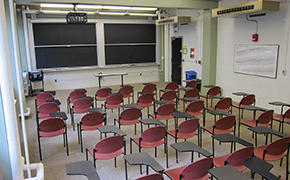Instructor Insights pages are part of the OCW Educator initiative, which seeks to enhance the value of OCW for educators.
Instructor Insights
Below, Professor Michael Short describes various aspects of how he teaches 22.01 Introduction to Ionizing Radiation.
As an instructor, I like to start by opening knowledge gaps rather than spouting theory at someone.
— Michael Short
Curriculum Information
Prerequisites
This course, which is the first subject in the Nuclear Science and Engineering undergraduate degree sequence, has no prerequisites. It is generally taken in the first semester of sophomore year, after two semesters of freshman calculus and physics.
Requirements Satisfied
Offered
Every fall semester
Assessment
Grade Breakdown
The students' grades were based on the following activities:
 36% Problem sets 36% Problem sets 20% First quiz 20% First quiz 20% Second quiz 20% Second quiz 24% Third quiz 24% Third quiz |
Student Information

Breakdown by Year
Mostly sophomores
Breakdown by Major
Mostly Nuclear Science and Engineering majors, with some Electrical Engineering and Computer Science and Mechanical Engineering students.
Typical Student Background
This is often students’ first experience with modern physics.
During an average week, students were expected to spend 12 hours on the course, roughly divided as follows:
Lecture
Met 3 times per week for 1 hour per session; 36 sessions total; mandatory attendance
Out of Class
- Weekly problem sets that typically included a number of simpler questions as well as more complex questions or lab exercises
- Preparation for quizzes


 Room 1 of 1
Room 1 of 1 